TRICS® Research Reports
TRICS has, over the years, undertaken or commissioned a variety of research projects, all of which are freely available to download here. TRICS® member organisations can also download these reports via the TRICS® Library module (once logged in and running the TRICS® system).
We always welcome ideas and suggestions from both TRICS® users and non-users for potential future research initiatives, so anyone with ideas for potential research should contact the TRICS® team.
This report has emerged from the sponsorship of a PhD course of study by the TRICS® Consortium in collaboration with the Economic and Social Research Council. The work sought to answer a number of questions and particularly, establish a scientifically grounded response to two key issues (i) can the data held in TRICS® be used for 'sound' econometric modelling and (ii) using appropriate econometric methods, is land zone placement (as defined in accordance with Planning Policy Guidance definitions) a genuinely important determinant of trip generation behaviour. The three land use categories studied in this project were office developments, food superstores and residential developments.
This research study is focused on multi-use sites which do not necessarily meet the definition of "mixed use". The term "mixed use" is currently a loosely defined policy objective and is thus difficult to evaluate using existing quantitative data. The research into multi-use will help inform the debate regarding the benefits of so-called mixed-use development. It will also highlight important factors that development control practitioners will need to consider when evaluating development proposals. The research is based on extensive analysis using data from the TRICS® database.
This research includes the collection of background information, including specifically commissioned multi-modal TRICS® surveys, to understand how the health sector and establishments within it operate and are influenced. TRICS® information is used to consider trip making and modal share. The influence and effect of Travel Plans is also considered.
In this report a concept of Back Validation has been adopted to investigate a process that can look back in time and verify the continued applicability, or not, of historic database sites. The objective of this research is to provide supplementary input and guidance as part of the "toolkit" for the user of the system. It aims to provide a positive steer to users when they consider how appropriate it is to use historic data.
This report is a review of the effectiveness of Travel Plans and their characteristics, an identification of the information needed to quantify the effect that Travel Plans will have on mode of travel, and researches current TRICS® data and the future role that TRICS® can have in incorporating Travel Plan effects. The approach adopted for this study has been to review existing research, and based on this review, to make recommendations for a possible way forward for incorporating the effect of Travel Plans into TRICS®. This research differs from other Travel Plan research projects in that it has sought to identify a common assessment method for understanding Travel Plan effectiveness.
The objective of this report is to assist TRICS® practitioners in identifying typical profiles of vehicle trip making throughout the course of a year for different types of land use. The research illustrates how traffic activity varies for different land uses by time of day, day of week, and month of year. During 2000, a total of 16 sites were identified for possible consideration, for which subsequently a full analysis was undertaken in 2001 for 8 sites. The eight sites cover five of the 16 main land use categories used as parameters within the TRICS® database. These are Retail (3 sites), Employment (1 site), Health (1 site), Residential (2 sites), and Golf (1) site.
This report examines the variation in levels of parking provision within new developments, for example by public transport accessibility or location, and relevance to travel characteristics by mode. The broad objectives of the research was to explore the relationship between parking provision, accessibility and mode choice for new developments; examine how the level of parking influences and relates to the mode choice; provide advice on parking standards for new developments; and determine appropriate definitions of modal accessibility, appropriate for use in TRICS®.
This report explores the circumstances in which trip rates vary, using various data sources (including retail sales information as well as the TRICS® database), and develops guidance on good practice in trip rate selection and use. The report also contains an examination of the relationship between parking supply and peak parking demand, which has important implications for the use of trip rates in estimating parking provision.
This report contains analysis of travel surveys undertaken at two foodstores in Staffordshire and provides information on travel by different modes, customer characteristics, use of the car parks, trip lengths and the level of primary trips. The results of the surveys are also compared with those from the earlier TRICS® Safeway research (reports 95/3 and 95/4).
This report analyses the results of questionnaire-based surveys and pedestrian/vehicle counts undertaken at four non-food retail parks in Dorset, Kent, Lancashire and Surrey. Each of the parks was surveyed on a Friday, Saturday and Sunday in 1996 and the results provide a valuable insight into the transport and shopping characteristics of this land use.
This report contains detailed calculated results to support the summary tables presented in 95/3.
This report summarises the results of surveys undertaken at 9 food superstores in November 1994. 1,000 interviews were undertaken with customers at each store and this was supplemented by traffic counts. The report illustrates the effect of store location on modal choice, parking requirements, travel length and relationships with adjacent land uses.
This report draws together the work that has been undertaken over the last 10 years on defining and quantifying "diverted and pass by traffic". An extensive bibliography is included.
Additional surveys at B1 developments with constrained parking - JMP Consultants Limited
This report provides an addendum to 93/1 by looking at an additional 14 office sites located on the fringe of London and in other areas where on-site parking was heavily constrained. The results confirm the conclusions from the previous report which outlines the importance of the management of on-site parking space.
This report analyses the basic assumption in the preparation of Traffic Impact Assessments that the aggregate level of traffic generated by a new retail development will be finite and static from the first year of opening until the store eventually closes or changes its trading position in some way. Average trip rate changes are calculated for all available data on the TRICS® database. This is backed by significant testing. The additional customer flows are analysed, so illustrating the effects of local competitive changes.
The report analyses the result of surveys at 60 offices located throughout the Southeast Planners Region to determine the relationship between parking, public transport and modal choice. The study concentrated on the journey to work trip.
The report concludes on the effect of the seven day trading patterns of seven food superstore sites throughout the Christmas period. The results are compared with data held for stores trading pre 1991. The sites included are Asda, Burgh Heath; Asda, Fareham; Sainsburys, Burpham; Sainsburys, Chichester; Sainsburys, Poole; Tesco, Bognor Regis; and Tesco, Hookwood.
This report compares parking demand ratios for land uses on the TRICS® system. The land uses include food superstores, DIY superstores, retail parks, offices, business parks and general industrial. The report studies in detail traffic flow data from a total of 223 sites. The results produce a statistical analysis of each land use classification and give a maximum parking demand ratio for each individual site.
The report sets out the traffic generation from three marinas (Agememnon Boat Yard, Bucklers Hard; Lymington Yacht Haven; Mercury Yacht Harbour, Hamble). Automatic traffic counters were established for 4 weeks throughout August 1988. Also, detailed parking accumulations were surveyed on one Saturday. The report contains details of the three sites and details of weather and tides (60 pp).
Based on surveys undertaken in 1984 at 60n industrial sites in England (21), Scotland (14), Wales (13) and Northern Ireland (12). The report establishes regression relationships for trip generation. Trips are subdivided by purpose (i.e. commuting, business and deliveries). The work was undertaken for the Scottish Development Agency, the Welsh Development Agency, the Northern Ireland Development Agency and English Industrial Estates. The report comes in two parts, firstly the analysis of data and secondly the establishment of a formal estimate procedure (130 pp).
The report reviews the parking standards for most land uses. Data from other authorities was compiled as a comparison. Maximum parking accumulation for different land uses was extracted from the TRICS® database and some 60 "spot" surveys were undertaken to determine maximum parking usage. Detailed discussions with other highway authorities to review the problems of parking standards are reported. The report contains recommendations for revised standards (180 pp).
A detailed assessment of traffic generation from 2 superstores, 2 DIY stores, 2 business parks and 2 offices. Data was collected by counts and interviews. Additional data exists in the report on modal split to offices and catchment areas for each development. The report contains full details of traffic counts and parking accumulations at each site in half hour periods (180 pp).
The report contains detailed traffic count data for 12 offices and "High Tech" sites surveyed in 1988. The data was collected by a variety of survey techniques including roadside interviews, foyer interviews and employee interviews. The report contains traffic flows in and out of each site with associated parking accumulation. Additional data exists for some sites on modal choice. Trip length distributions (employment catchment) are available for all sites. The report covers 4 offices in Central Uxbridge, 2 "rural" office complexes, 2 offices in local centres, 2 industrial estates (traditional) and 2 high tech sites. One of the high tech sites was Stockley Park with 100%,000 sq. ft. of development (150 pp).
Technical Notes and Guidance
TRICS® Consortium Limited regularly undertakes technical analyses and produces technical reports and guidance documents that we consider to be very useful for our member organisations. A selection of more recent and key documents can all be freely downloaded from here.
The purpose of this document is to assist TRICS clients commissioning surveys, and site operators at developments being surveyed by TRICS, with regards to the supplementary information that is required to populate the TRICS database and subsequently for a survey report to be produced. The note provides clients and site operators with clear and comprehensive guidance on this supporting information that they will be asked to supply, providing the necessary definitions and descriptions of each separate potential item of data. Data requirements differ by development type, and this note covers everything that TRICS clients and site contacts will need. It is also a very handy note for organisations wishing to undertake their own TRICS-compatible surveys.
The purpose of this document is to assist TRICS data collection contractors undertaking TRICS surveys, with regards to the survey count and supplementary information that is required to populate the TRICS database and subsequently for a survey report to be produced. This note should be used in conjunction with “TRICS Data Collection Note for Clients & Site Operators”, which provides guidance for the supplementary information that is required directly from clients commissioning TRICS surveys and site operators where TRICS surveys take place. The note provides TRICS data collection contractors with clear and comprehensive guidance on the information that they will be required to supply, providing the necessary definitions and descriptions of each separate potential item of data. Data requirements differ by development type, and this note covers everything that TRICS contractors will need. It is also a very handy note for organisations wishing to undertake their own TRICS-compatible surveys.
This table displays the Use Classes Order (England) categories, as per the last amendment by the TCPA in September 2020, and the corresponding TRICS land use sub-categories which match the individual use class criteria. It is a quick and handy reference for TRICS users and any other interested organisations as to which of the TRICS land use sub-categories fall within the use classes as they are currently defined. Note that Use Class is a data field within every individual TRICS site in the database.
TRICS has been undertaking vehicle (and from 2000 onwards multi-modal) surveys at fast-food drive-through developments for many years. This has been enhanced by introducing several new data fields to provide greater context for this popular land use sub-category, including drive-through lane vehicle capacities, numbers of specific pick-up bays and whether a site undertakes home deliveries. There were sufficient surveys in the database to undertake a technical analysis investigating trip generation for this development type, split by weekdays and weekends and by 2000-2011 and 2012-2022 periods. The aim of this technical analysis was to provide TRICS users and the wider transport planning community with clear and comparative trip generation data, with detail on the survey selection criteria and the method used in the analysis provided. A series of comparative tables present the results, along with a series of observations, and full trip rate calculation results tables are included in the report’s appendix.
In 2008, a new data sub-section entitled “Accessibility & Census Information” was introduced into TRICS, with the first sites including this new sub-section surveyed in the same year. The sub-section consists of two tables, the first entitled “Road Network Distance to Local Developments”, and the second entitled “Census Data”. It is the Census information which is discussed in this document, which is the most up-to-date explanatory note on how Census data in England and Wales, Scotland, Northern Ireland and the Republic of Ireland is sourced for inclusion within the TRICS database for individual sites that are surveyed.
TRICS first undertook multi-modal surveys in 2000, which saw the introduction of the Vehicle Occupants count into the database. As multi-modal TRICS surveys evolved, this count was further split, and from 2008 the Vehicle Occupants mode split was represented in TRICS pie charts by separate “Single Vehicle Occupant” and “Multi-Vehicle Occupant” percentages. The Vehicle Occupants count provides our users with a further layer of information, as it is split by vehicles with different numbers of occupants and is also supplemented by an Occupancy Split bar chart accessible from within individual survey counts. There is now a sufficient survey sample for a set of Vehicle Occupants analyses for selected land use sub-categories within the database, and this note presents the results of this, providing some basic information on the Vehicle Occupants count across a good representative mix of development types, including analyses of trip generation and mode split, broken down by groupings of central and outer main TRICS location types. Results of the technical analysis are presented in a series of tables for each of the eight selected land use sub-categories, which consist of 01/A (Food Superstore), 01/C (Discount Food Store), 02/A (Office), 03/A (Houses Privately Owned), 03/C (Flats Privately Owned), 05/G (GP Surgery), 06/A (Hotel) and 07/C (Leisure Centre). The results tables show trip rates by Vehicle Occupants, Total Vehicles, Total People, and Vehicle Occupants divided by Total Vehicles, plus peak hour trip rates and the Vehicle Occupants mode split (with a further split single and multi-occupants). A further table combines the land use sub-categories into a single area for comparative purposes, there are some observations presented, and the full trip rate calculation results tables plus mode split pie charts are available in the appendices.
TRICS has been undertaking vehicle (and from 2000 onwards multi-modal) surveys at petrol filling stations for many years, with the introduction of the 13/B (PFS with Retail) land use sub-category being introduced at a later stage in the development of the database (surveys at 13/A (Petrol Filling Station) sites having been undertaken over a longer period). Petrol filling stations have changed significantly since the first TRICS surveys were undertaken, and there are now sufficient surveys in the database to allow for a technical analysis comparing trip generation between the two PFS sub-categories. The aim of this technical analysis was to provide some basic initial comparative information, which the survey sample was sufficient to deliver. The survey sample also allowed survey splits between 2000-2009 and 2010+ periods, as well as by weekdays and weekends, with the main TRICS location types of Suburban Area, Edge of Town and Neighbourhood Centre (excluding villages) being included. The full survey selection criteria and the method used in the analysis is provided. A series of comparative tables present the trip rate results for 0700-1000, 1600-1900 and 0700-1900 time periods, with peak hour trip rates also shown. These results are followed by a summary of observations, with the full trip rate calculation results tables included in the appendix.
This guidance note assists TRICS data collection contractors in gathering the necessary supporting information for all TRICS surveys on local public transport provision and goes through the Public Transport section of the TRICS data collection form stage-by-stage. Full definitions of the public transport data contained within TRICS surveys are provided, broken down into the Public Transport Provision Summary, Bus and Tram Services, and Rail Services sub-sections. Understanding the requirements of public transport information that is required to be collected for TRICS surveys can be difficult for those who have not regularly undertaken TRICS surveys previously, so this guidance provides handy and detailed assistance using clear and understandable language. This note would also be very helpful to anyone considering undertaking and managing TRICS surveys, as well as providing a helpful reference for TRICS users.
TRICS has been undertaking surveys at residential developments ever since the project commenced in the late 1980’s and, to this present day, residential surveys remain very important to our user organisations. Since 2000, these surveys have been enhanced with multi-modal counts, and TRICS annually manages and delivers many separately commissioned Standardised Assessment Methodology (SAM) surveys at residential sites, further adding to the database in this important area. The main Residential land use category is broken down into numerous sub-categories which contain sufficient surveys for a technical comparative analysis, and this technical note reports on this trip generation and mode split analysis across seven of these sub-categories. The survey samples allowed separate sets of analyses for the 2000-2010 and 2011-2021 periods, with separate analyses undertaken for Total Vehicle and Total People counts (the latter allowing the mode split analysis). The main location types of Suburban Area, Edge of Town, and Neighbourhood Centre (excluding villages) were included in the data set. The comparative results are presented in tables, with trip rates presented for the 0700-1000, 1600-1900 and 0700-1900 time periods as well as stated peak hours. Further tables show comparative mode split and mode shift results for the 0700-1900 period, with mode split percentages by vehicle occupants, pedestrians, cyclists, and public transport users. Some observations follow, and the full trip rate calculation results tables plus mode split pie charts are included in the appendices.
TRICS Consortium Limited are pleased to announce the publication and free availability of our technical report covering multi-modal and internalisation surveys undertaken at the Cambourne Village development in June 2018.
We believe this study is the first of its type. We surveyed the whole Cambourne Village site incorporating the usual multi-modal TRICS methodology, plus we also surveyed a number of separate internal non-residential developments within the overall site, looking at splits between internal and external trips, plus the types of journey that were being undertaken. Of course, the study only covers one particular large new settlement on one day (all surveys were undertaken simultaneously), and our results do not reflect any other similar new settlement, but the question of internalisation within such developments has been something that has been raised for a number of years, so we are pleased that we have been able to start looking into this in more detail. We see this as just the beginning, and we look forward to receiving feedback from anyone interested in this subject.
The report can be downloaded HERE.
We are also pleased to announce that an analysis portal that TRICS users can use to interrogate the survey results is also available within the Members Area of this website (just log in with user details and it is available there). At the end of the technical report there is some guidance on how to use this facility, which allows our users to look at the individual non-residential developments within Cambourne Village and undertake a variety of analyses based on survey time periods, the types of journeys being made, and splits between journeys to and from these developments made by people from within Cambourne Village and those external to it.
As always, the TRICS team are on hand to answer any queries you may have about this study.
TRICS Consortium Limited is pleased to announce the publication of a new Technical Note, “A Comparison of Vehicular Trip Rate Variation by TRICS Regions and Location Types”, which is now freely available to download by everyone. This report presents the findings of research recently undertaken by the TRICS team into vehicular trip rate variation by region, when compared to an identical exercise by TRICS location type. It examines vehicular trip rate variance by examining three of the largest and most often used land use categories in the TRICS database, these being 01/A (Food Superstores), 02/A (Offices), and 03/A (Houses Privately Owned). Our existing TRICS Good Practice guidance has always advised that our users should refrain from deselecting sites by geographical region as a default method, and instead should consider the TRICS location type along with a number of other local factors that may influence vehicular trip rates. We have now undertaken a set of technical analyses using the TRICS database to provide further clarity on this subject to our Good Practice Guide, which is being updated in 2020. A presentation on the report and its findings will be given at the 2019 TRICS Training & Development Forum in Oxford this November.
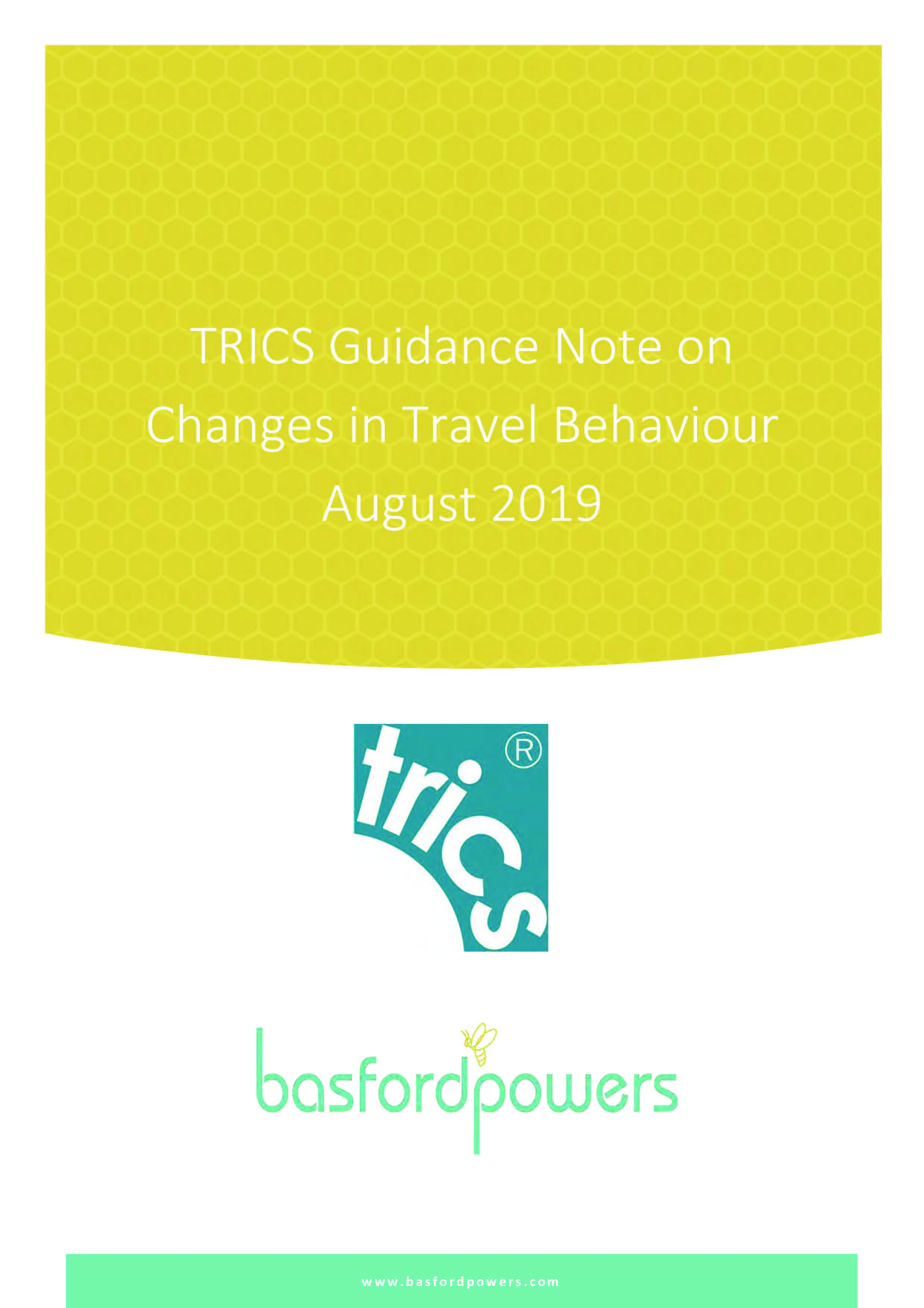
TRICS Consortium Limited (TRICS) is responding to the fact that the world is experiencing significant change in relation to social, technological, economic and environmental drivers which in turn is creating new dynamics in travel behaviour and challenges for transport planning. In the face of deep uncertainty, the “predict and provide” paradigm that has framed transport planning processes is to give way to “decide and provide” paradigm – decide on the preferred future and provide the means to work towards that which can accommodate uncertainty.
It is fundamental that TRICS, as a spatial planning tool, provides direction to support the “decide and provide” approach and managing uncertainty in forecasting and trip generation analysis.
TRICS is therefore seeking to gather together the evidence of change and consider in what ways the use of TRICS may be developed to consider the impact of changes in travel behaviour.
BasfordPowers (BP) in conjunction with ITS Leeds (Professor Greg Marsden) and UWE (Professor Glenn Lyons) has been commissioned to produce a TRICS Guidance Note concerning Change in Travel Behaviour.
It is proposed that this Guidance Note informs TRICS users of the changes in travel behaviour and discusses the implications of travel trends for TRICS users. Further research maybe required to understand the implications of the evidence concerning trip rate reductions which have been cited in the All Change Commission on Travel Demand report on the use of TRICS data and analysis. Future traffic forecasts included in the Department for Transport Road Traffic Forecasts 18 will also have implications for the use of TRICS which also needs to be understood.
The report is now available and can be downloaded from HERE
Section 5 of this report contains Ten Key Questions for TRICS Users. We have created an on-line survey for our users to participate in, where you can provide your views if you would like to assist in the further development of a “Decide and Provide” approach to transport planning. The survey asks users to answer these ten questions, and there is also the opportunity to provide your additional comments at the end.
The link to this survey is HERE
As always, TRICS Consortium Limited greatly appreciates the views of its user.
This technical note provides examples of variation in TRICS mode splits when using the mode split pie chart generation feature that is available to TRICS users on trip rate calculation results screens. Focusing on the 02/A (Office) land use sub-category, the note looks at two types of analysis. The first is a mode split breakdown of the multi-modal office sites in the TRICS database by the main location types of Town Centre, Edge of Town Centre, Suburban Area and Edge of Town. The second analysis takes each of these sets and further analyses mode split by parking provision, breaking the groups down into two types (sites with lower parking provision per 100m2 of Gross Floor Area and sites with higher parking provision). The note is intended to show users how mode split can be affected by location type and car parking provision, allowing for the fact that numerous other “external” factors should also be taken into consideration. Mode splits are presented in a series of tables and pie charts, split by total survey day (0700-1900), inbound commute peak (0700-1000) and the typical lunchtime period (1200-1400). The same process then takes place using parking provision, and a summary of findings concludes the note, a list of TRICS sites used in the analysis included within the appendix.
TRICS has been undertaking vehicle (and from 2000 onwards multi-modal) surveys at fast-food drive-through developments for many years. This has been enhanced by introducing several new data fields to provide greater context for this popular land use sub-category, including drive-through lane vehicle capacities, numbers of specific pick-up bays and whether a site undertakes home deliveries. There were sufficient surveys in the database to undertake a technical analysis investigating trip generation for this development type, split by weekdays and weekends and by 2000-2011 and 2012-2022 periods. The aim of this technical analysis was to provide TRICS users and the wider transport planning community with clear and comparative trip generation data, with detail on the survey selection criteria and the method used in the analysis provided. A series of comparative tables present the results, along with a series of observations, and full trip rate calculation results tables are included in the report’s appendix.
In 2008, a full review of the survey sites within the TRICS database was undertaken following clarifications and amendments to the main and sub TRICS location type definitions. This document is a handy and quick reference for anyone wanting to understand the location type database fields, which are an important filtering criterion when TRICS users make their selections prior to calculating trip rates. These definitions remain valid today.
SAM (Standardised Assessment Methodology) has been developed by TRICS with the purpose of collecting multi-modal transport and travel data, so that a site’s travel plan can be monitored. This technical note reports on data collected using the SAM approach at four pilot sites in the south-east of England. From these, key findings about each of the sites have been identified as well as for SAM in general. The four sites were originally surveyed in October 2005 and again in October 2008. For each site, analysis was undertaken on modal shift, changes in trip rates, and changes in the number of vehicles and people accessing the sites. Following these sets of analyses there is a review of the Standardised Assessment Methodology and suggestions made for refinements.
This technical note on servicing vehicle requirements was prepared to provide a useful supplement to the first principals approach of establishing servicing needs and was intended to be used alongside other existing guidance. The aim was to develop a robust assessment methodology for servicing bay requirements based on observed influential factors. The methodology was based on the premise that servicing requirements are influenced by two key factors (i.e., vehicle dwell times (itself a product of vehicle size) and arrival patterns). It was tested by estimating the number of servicing vehicles and scale of servicing facilities for shopping centres with a mix of uses (i.e., retail/leisure/food and drink). The assessment tested the methodology using available information within TRICS, and presented its findings, judging the methodology’s suitability for wider use. The technical note includes a literature review, details of the methodology, the servicing vehicles assessment, and the management of servicing areas. Dwell times, Poisson Distribution, service vehicle rates and estimated maximum servicing bays accumulations are contained within the appendices.
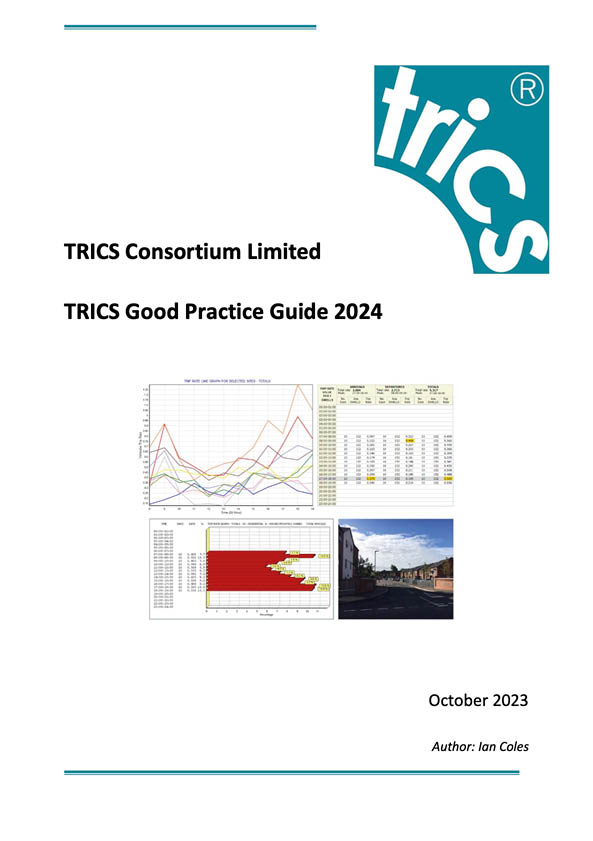
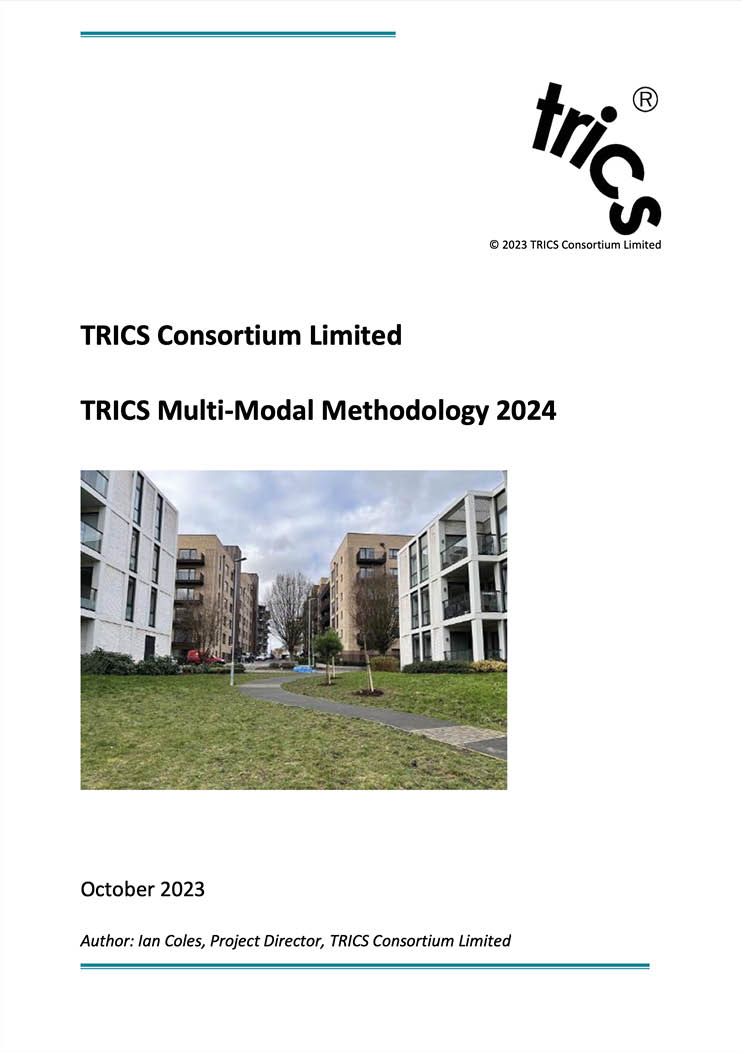
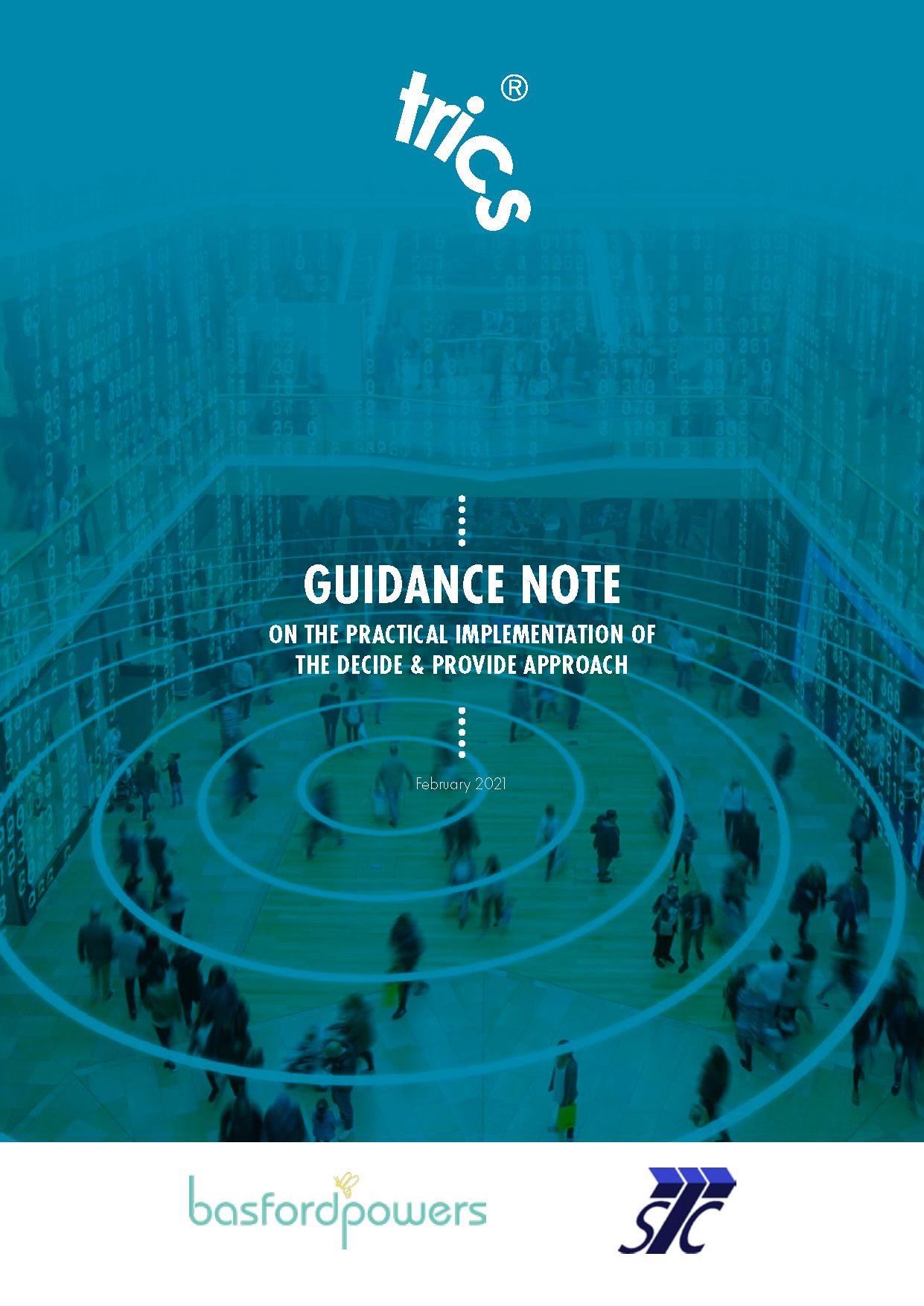 The report can be downloaded HERE.
The report can be downloaded HERE.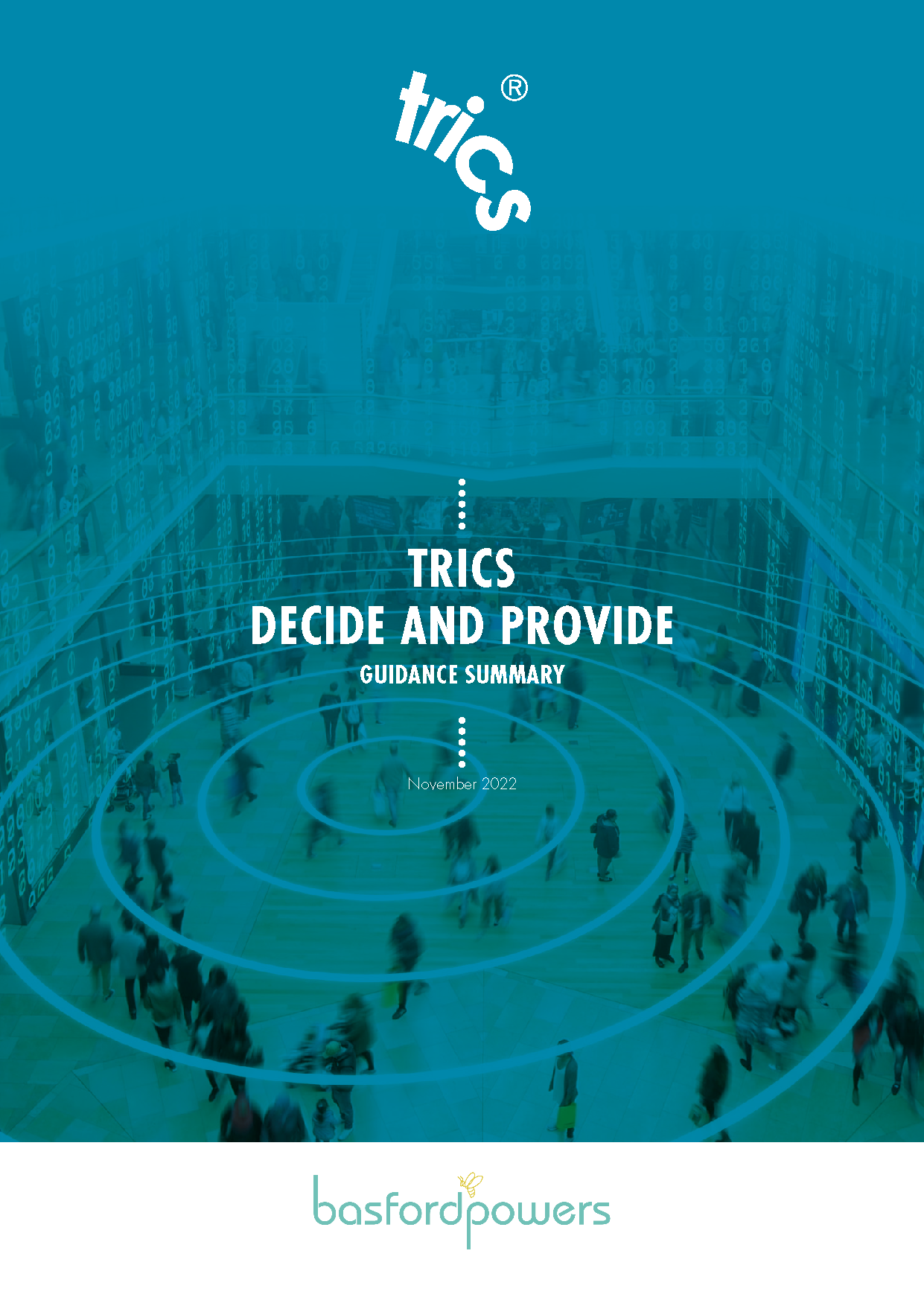 The summary can be downloaded HERE.
The summary can be downloaded HERE.